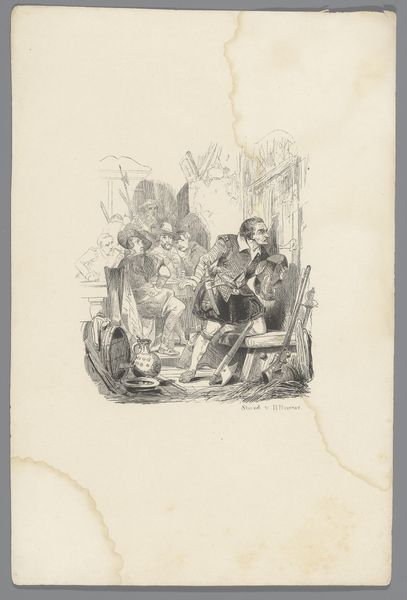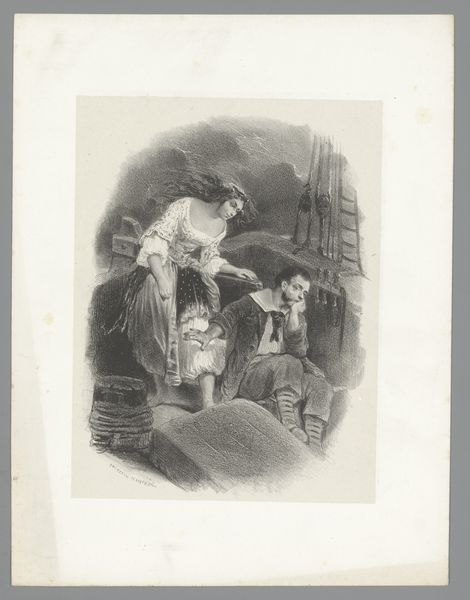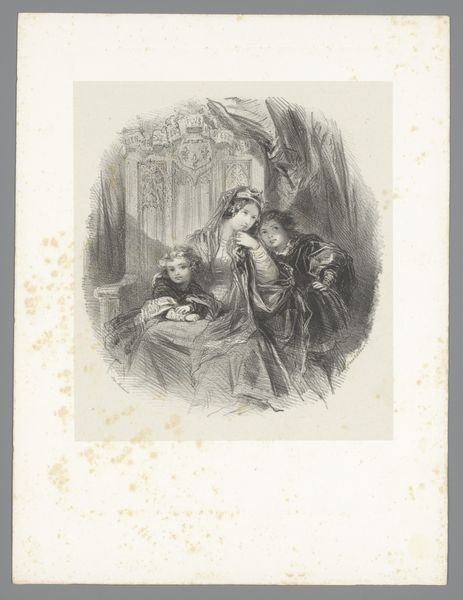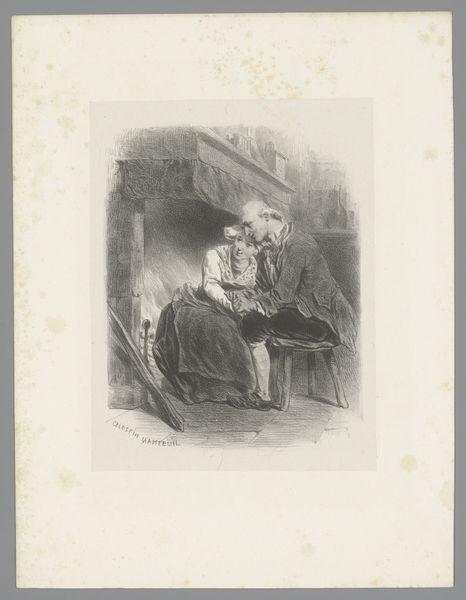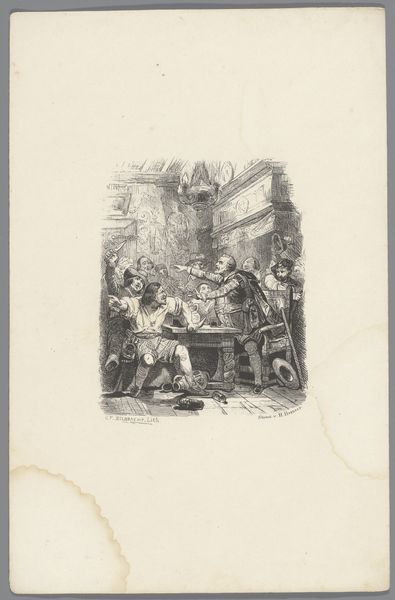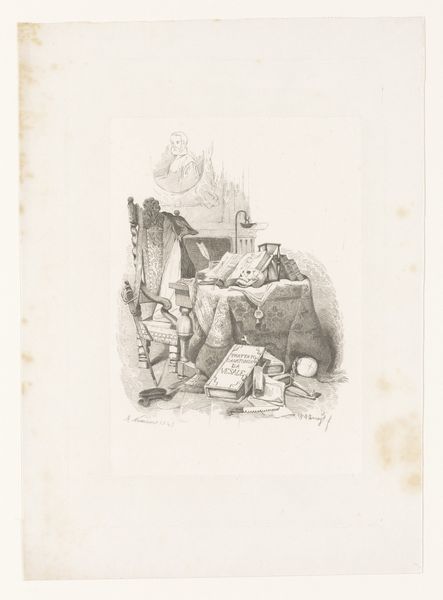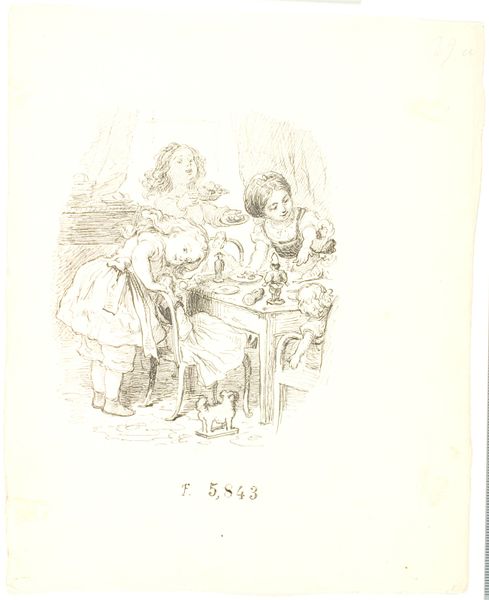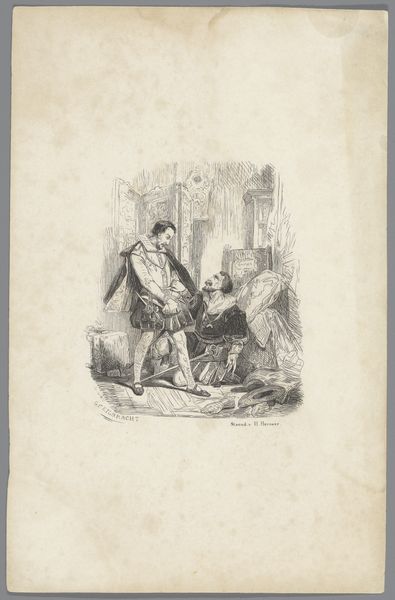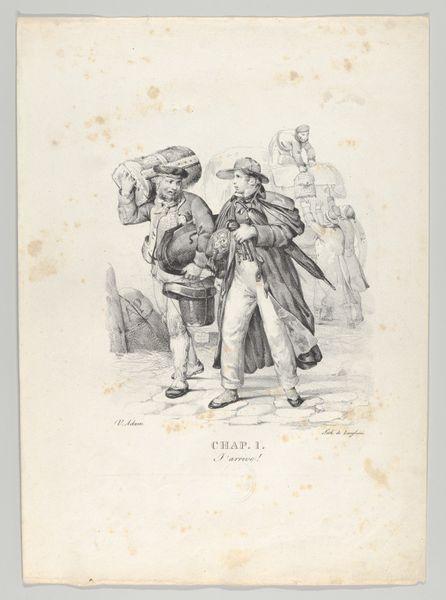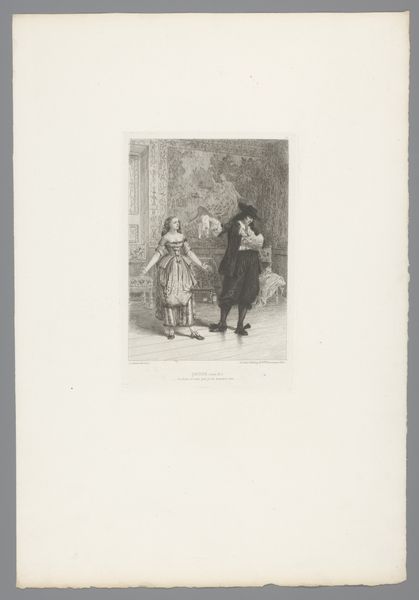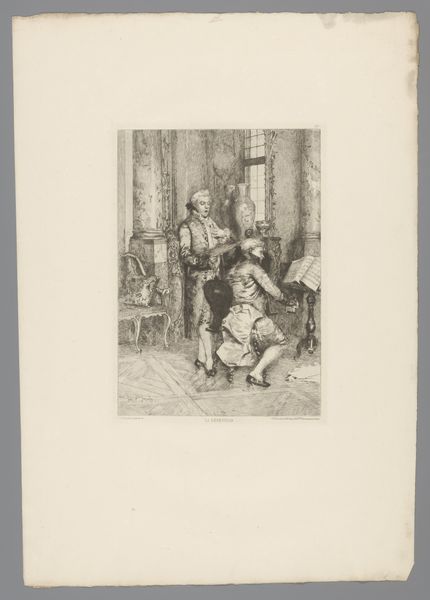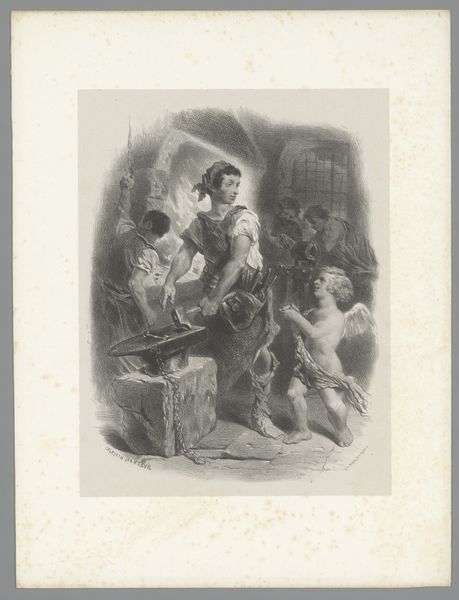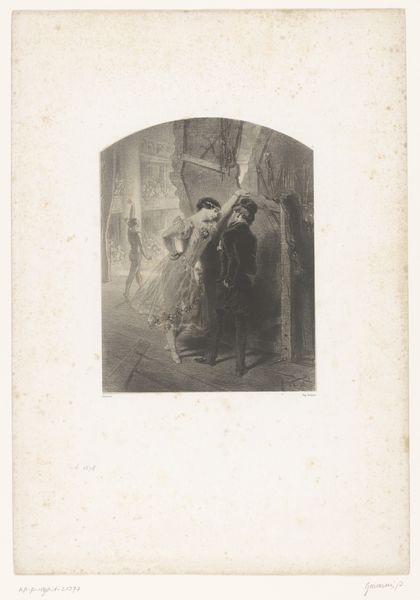
Twee mannen staande voor een zittende man c. 1844 - 1854
0:00
0:00
drawing, ink
#
portrait
#
drawing
#
figuration
#
ink
#
romanticism
#
genre-painting
Dimensions: height 244 mm, width 163 mm
Copyright: Rijks Museum: Open Domain
Editor: So, here we have Gerhardus Fredericus Eilbracht's "Twee mannen staande voor een zittende man," an ink drawing dating from around 1844 to 1854, held at the Rijksmuseum. The etching feels… theatrical, almost stage-like. What strikes you about it? Curator: I notice immediately the textures achievable through ink drawing and the probable socio-economic status differential. Notice the figure seated in what might be expensive, heavily worked robes—likely indicating his role as an academic or clergyman. While the standing figures' costumes denote lower class citizens possibly looking to gain some benefit from their encounter with this elite member of society. It seems evident the paper's purpose and intended audience will define the message received by it. Is this commissioned or more in line with social commentary to the masses? Editor: Interesting! I hadn't thought about it that way, focusing more on their interaction. Do you think the medium itself - ink - has a particular significance here? Curator: Absolutely. Ink allowed for the mass reproduction of images via prints. Its accessibility enabled dissemination of social critiques and political satire to an audience outside of traditional art patrons. Are we looking at propaganda created for the ruling or disenfranchised? Editor: So, it's not just about the scene itself, but about who had access to it, and how widely it could be shared? Curator: Exactly. Consider the labor involved in creating this drawing and producing prints. Who was employed in that work, what was the cost to make it so widely available, and for what reasons? What materials do we take for granted now but would have been limited in scope? The work asks to analyze consumption by considering accessibility not based on just class but its production costs to get it to the different stratifications of laborers at that time. Editor: That’s a completely different lens through which to view it! I will consider the material conditions in artwork production much more carefully now. Curator: Precisely! Examining art through the lens of labor, material, and class shifts the focus from aesthetic judgment to social reality.
Comments
No comments
Be the first to comment and join the conversation on the ultimate creative platform.
